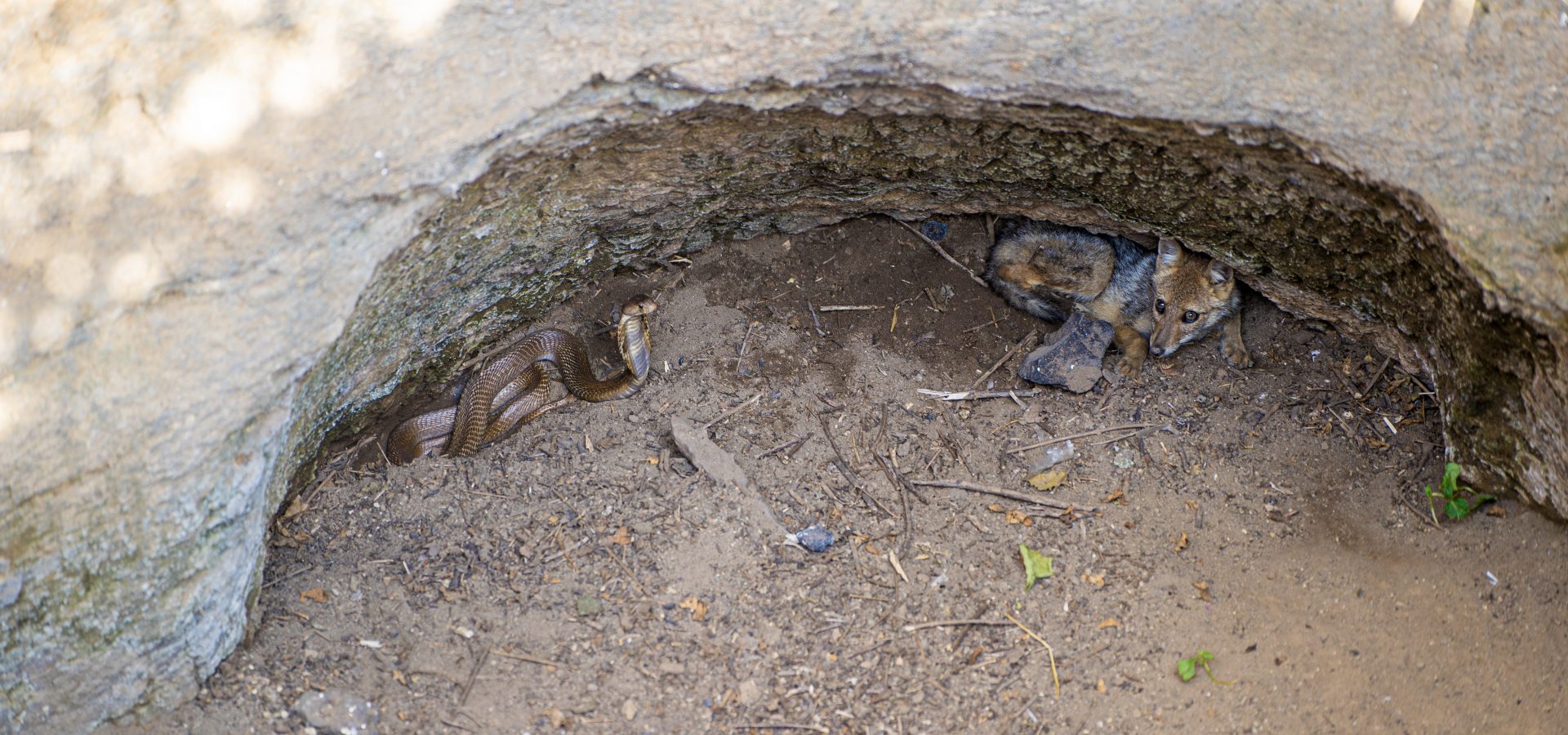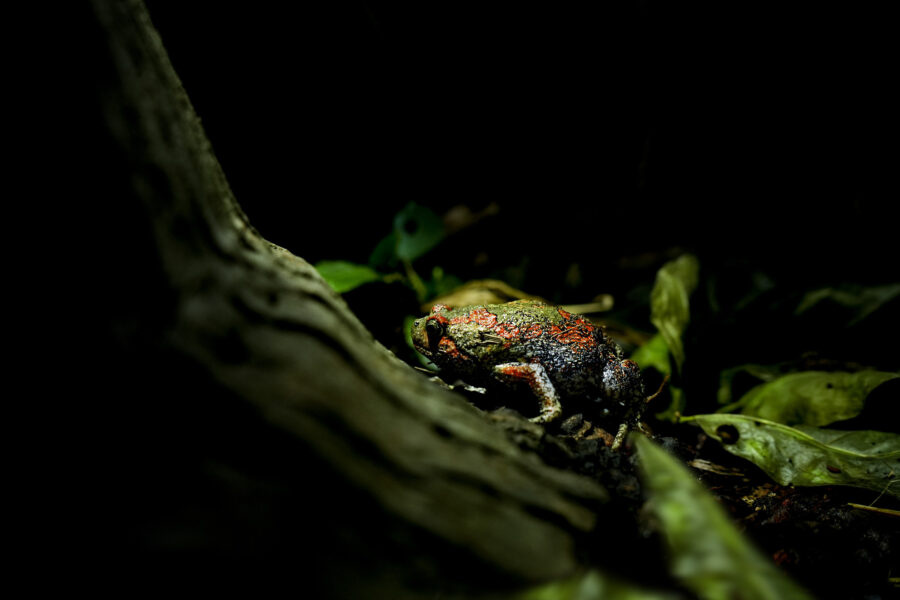An unforeseen danger in the form of an open well, in the Rajuri Village of Maharashtra forced an unlikely duo to make an uneasy truce. Farmers were overwhelmed to find a golden jackal trapped inside a 25-foot-deep well. However, this jackal was not alone. It was accompanied by the highly venomous Indian cobra, also caught inside the well.
The golden jackal was cowering under a small outcrop, trying its best to maintain a safe distance from the almost 5-foot-long Indian cobra. Fortunately, due to the awareness programmes that are conducted among people residing close to wildlife, the farmers followed proper protocol to enable a rescue operation.
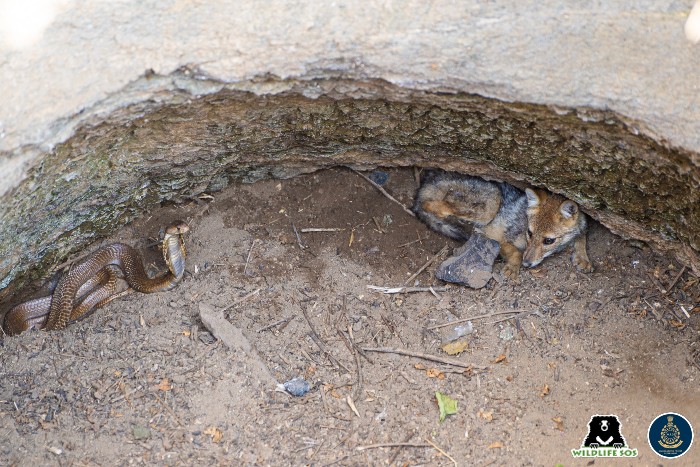
The local residents immediately contacted the Maharashtra Forest Department, and the officials wasted no time in alerting the Wildlife SOS rescue team. The urgency of the situation prompted our team to rush to the conflict zone with the essential rescue gear.
Please Sign This Petition
Your voice makes a difference! Ask Indian officials to take action to cover open wells.
SIGN THE PETITION FOR OPEN WELLSOpen, uncovered wells have been a huge threat to wild animals for years, and several have fallen into them by accident. But to witness a snake and a jackal trapped in the same well was a unique and tense experience. The Indian cobra is a highly venomous snake, and a single bite by the snake was enough to bring an end to the jackal’s life. An aura of tension began to take over as several people gathered at the site.
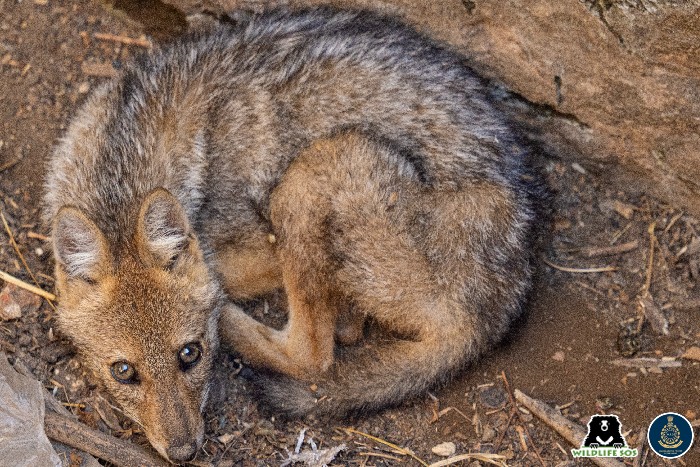
After carefully assessing the situation, the rescuers first lowered a safety net into the well to haul out the jackal. Their intention was to separate the two animals as soon as possible and tackle their rescues one by one. Once the jackal was brought out of the well, the team focussed on how to rescue the snake.
Handling the cobra was trickier, and one of our team members had to get down into the well in order to safely extricate it. This entire operation lasted 2 long hours, and was a successful one. Our team conducted an on-site analysis of both the animals, and they were declared fit to be released back into the wild.
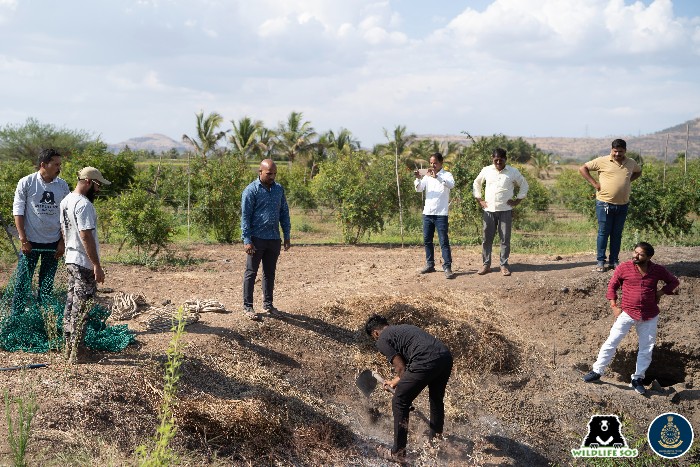
The jackal was identified to be a 2-year-old male. It dashed into the undergrowth as soon as it was released at the very same spot. The cobra was taken a short distance away from the location of the well, where it slithered into the distance.
The golden jackal is one of the most widespread canids across India and is known for its extremely adaptable nature. Though omnivorous, it prefers to consume meat, and often ventures close to human habitations. This often causes humans to encounter jackals, leading to conflict situations.
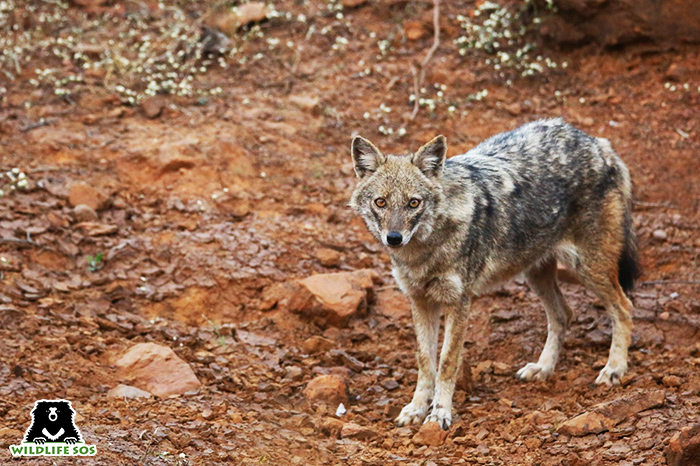
Wildlife SOS has rescued several golden jackals over the past years, including one that had fallen into a 40-foot-deep well in Maharashtra. Golden jackals are known to actively prey on reptiles like snakes and monitor lizards, but in this scenario, the jackal made no attempt to attack the venomous snake.
Our team has often been called to extricate venomous snakes from various parts of the country and one of the most frequently dealt with reptiles is the Indian cobra. Also known as the spectacled cobra, it is one of the Big Four venomous species of snakes in India.
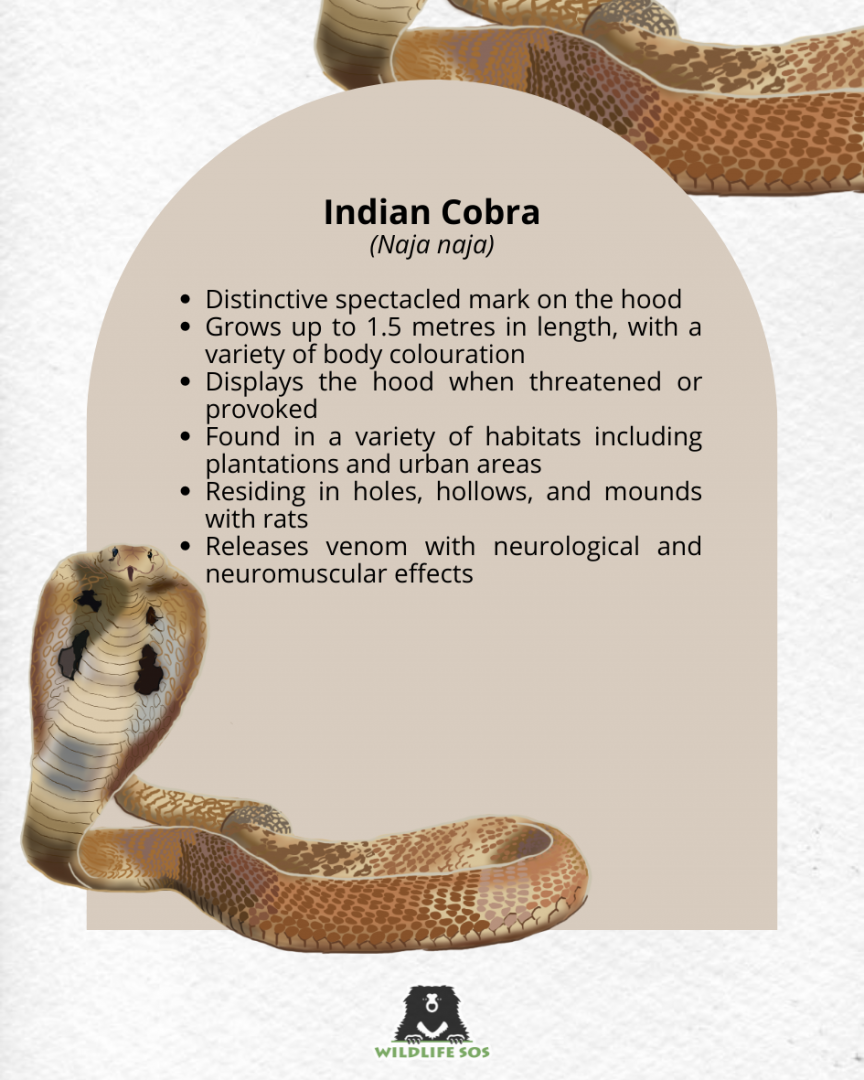
In this peculiar case, both species had fallen victim to an open well at around the same time. Despite being mortal enemies in the wild, the two animals inside the well seemed to have understood the common risk of survival they were facing. Though they had formed an unlikely alliance, no one could ascertain how long it would last.
We firmly believe in the importance of including local communities as the frontline members of conservation. Every rescue begins with a call from a concerned individual from the right place, at the right time. But rescues such as this one are often made complicated owing to the inherent stigmas and myths that exist among the local populace regarding animals like snakes and jackals.
Golden jackals are often killed for the ‘jackal horn’, a talisman that is believed to be derived from the skull of the animal. It is believed by many that this horn wards off evil spirits and brings good luck. However, the jackal ‘horn’ sold in the market is in fact an artificial product that is put together by poachers and traffickers using mud, skin and tufts of hair. The golden jackal is also threatened by the rapid fragmentation of its habitat being brought on by deforestation, along with hunting, wildlife trafficking, human-animal conflict, and automobile accidents.
Golden jackals and Indian cobras are species protected under the Schedule II of the Wildlife (Protection) Act of 1972. Though laws safeguard both animal species, an inherent revulsion against them — especially against snakes — often makes appropriate legislation difficult. Human-snake relationships are often problematised by the various misconceptions surrounding them, which leads to the capture and killing of snakes.

Wildlife SOS has conducted several campaigns and workshops to generate awareness on the right way to tackle wild encounters, and dispelling myths about animals. However, a psychological reformulation is simply not enough to combat the problem posed by uncovered wells.
Give To Support Our Well Covering Program
Your gift to Wildlife SOS can go directly to cover an open well.
GIVE TO COVER AN OPEN WELLOur team at Wildlife SOS has spent years saving and rehabilitating several animals from these wells, including hyenas, civet cats, sambar deer and leopards. These animals cannot scale the vertical walls of the well in order to escape. The result of this could lead to death by malnutrition, drowning, or wounds. Timely rescues are therefore extremely important in such cases.
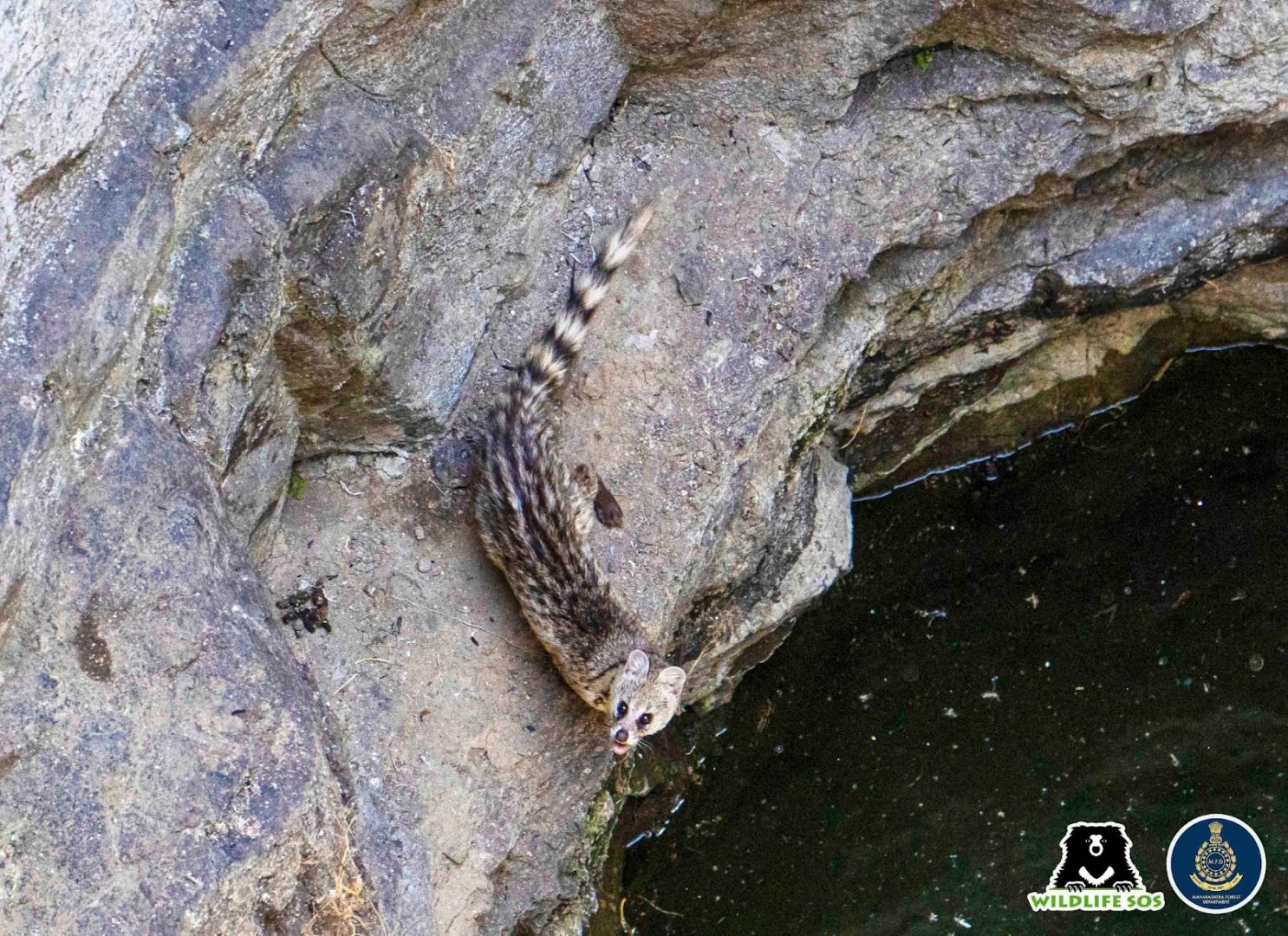
Prevention is always better than cure, and to eradicate the problem of open wells, Wildlife SOS launched the Open Wells Conservation Project in Maharashtra. The project firmly intends to protect wild animals from becoming victims of open wells. Phase I of the project plans to cover 40 uncovered wells, of which 10 have so far been successfully covered.
You too can make a change and help us in this process by signing our petition against open wells.

